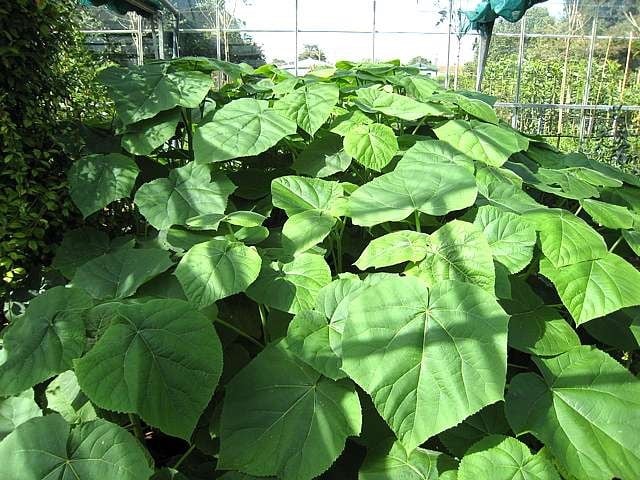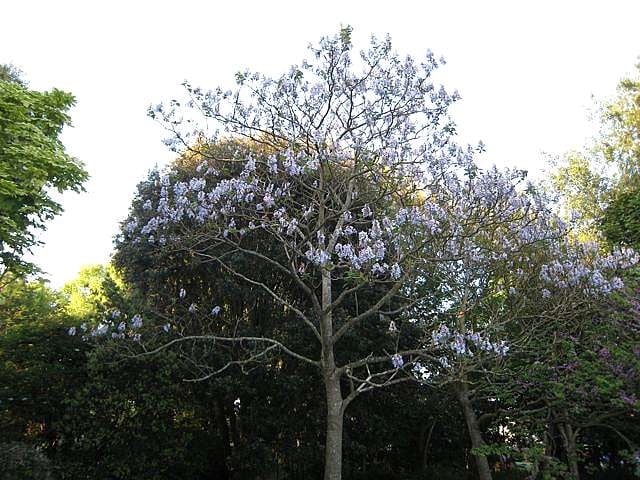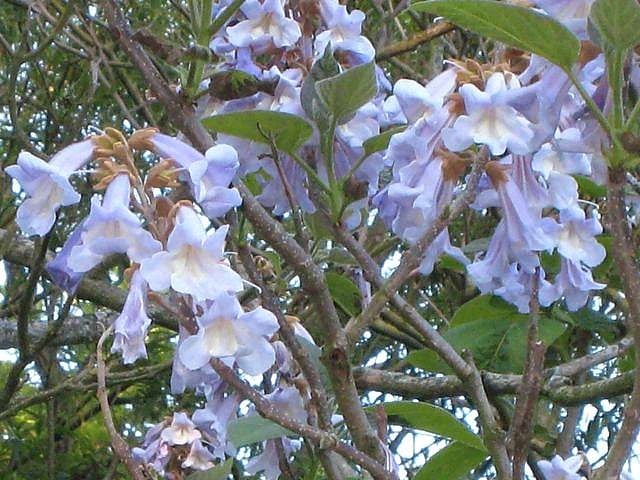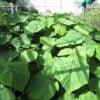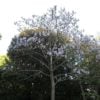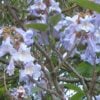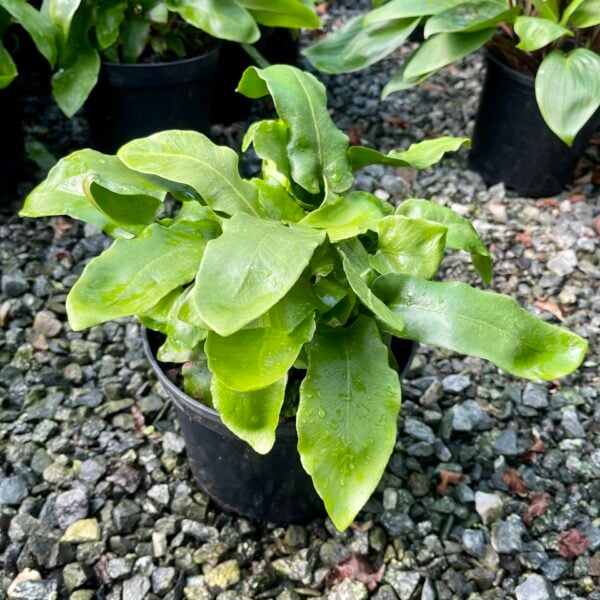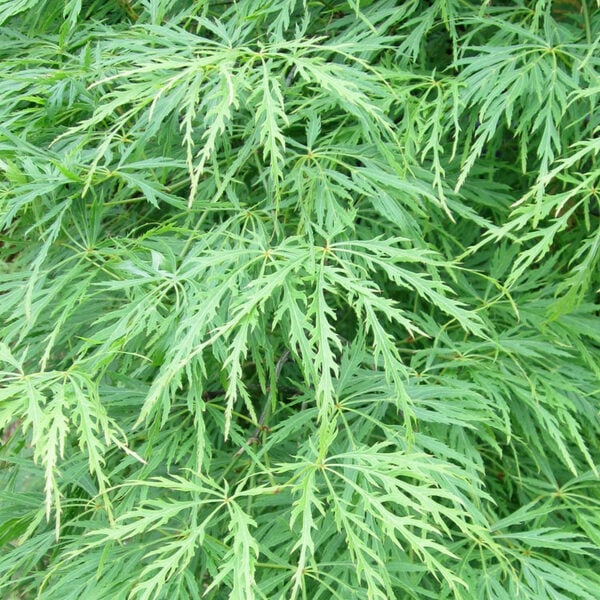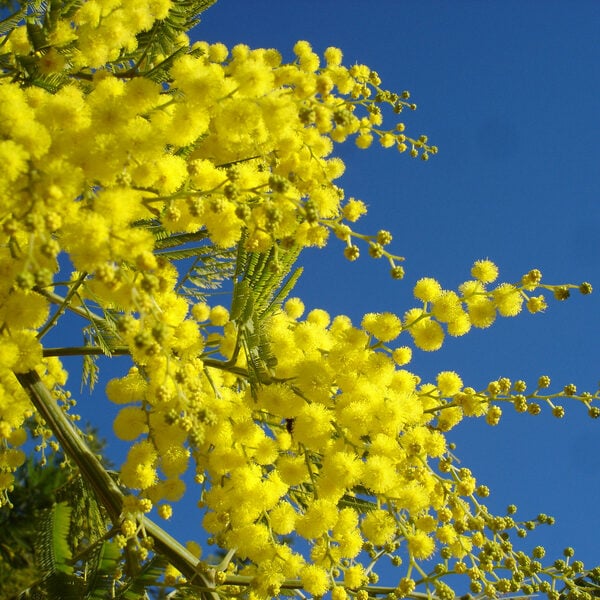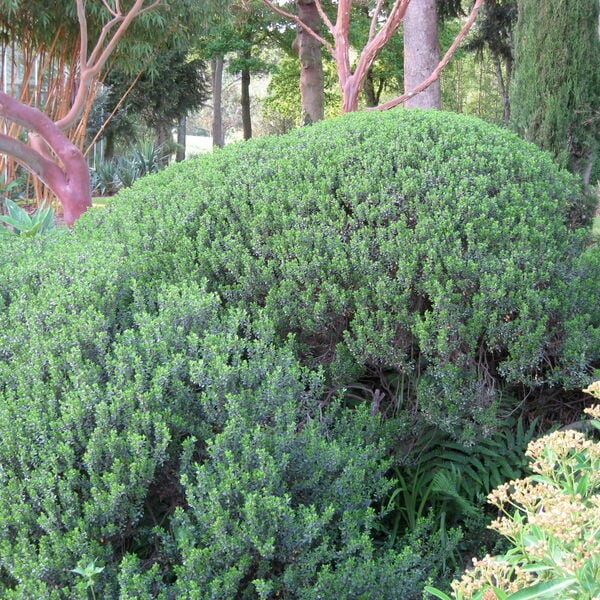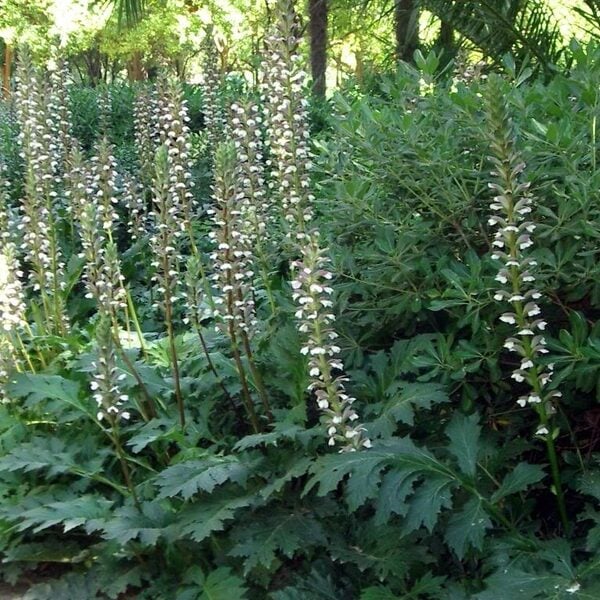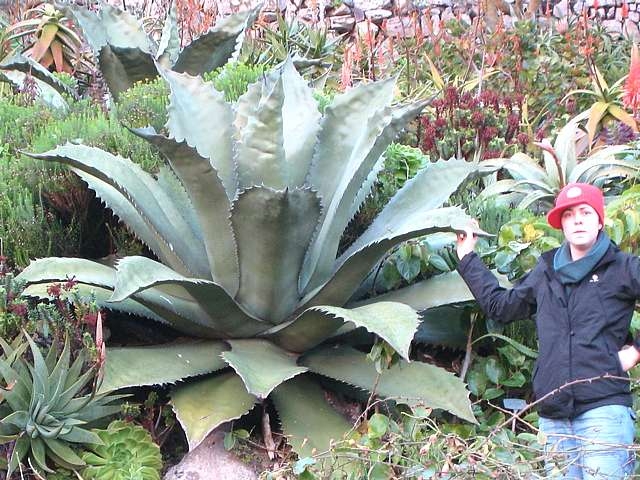Paulownia tomentosa (Foxglove Tree)
Vigorous deciduous tree covered in purple flowers (‘Foxglove’) before the leaves. Often coppiced every year to produce 10ft shoots bearing gigantic leaves for the exotic look. Please contact us for stock availability and sizes.

Hardiness level Green
A fast growing deciduous exotic from China and Japan noted for its enormous soft leaves and copious quantities of purple foxglove-like and delicately scented flowers in April. Never thought I'd ever use an expression like 'delicately scented flowers'.
Either you plant it and leave it to produce its fine domed shape (it can reach 40ft after 40 years) and its purple foxglove flowers (which appear before the leaves and could be mistaken for a Jacaranda Tree from a distance) OR you do the Giant Vegetable Trick.
The Giant Vegetable Trick can be done with any fast growing deciduous tree but works particularly well with Paulownia; once established (after one or two years), cut it down to the ground (within 6" of the ground) and watch. It will grow to 12ft in one year, produce huge leaves (2ft across) and look impressively exotic for the summer. Can you do that every year in perpetuity? Probably not, but you can do it for a number of years and it's fun while it lasts. Eventually, the stump will rot and you'll have to start with another one.
As a tree, it needs space and some shelter from strong winds; the leaves are nowhere near as big on an adult tree as in the Giant Vegetable Trick but they're biggish and very soft. They have a reputation for not flowering until they're about 15 years old which is odd because we find they flower on the nursery at about 3 or 4 years old. They obviously haven't read the books.
They're perfectly hardy but they come from a more continental (hot summers, cold winters, clearly defined seasons) climate than ours with the following consequences : slow to leaf in the spring (not fully out until late May/early June) and some frost damage to the tips of the branches because our insufficiently warm autumns don't always cause new growth to become woody. Neither of these are particularly significant as far as the health and beauty of the tree's concerned but it's worth knowing these things.
Generally, a reliable, easy and distinctive little tree. The rapid rate of growth makes them rather gratifying for those of us who might describe themselves as impatient gardeners. i.e. everyone.
There are a couple of beautiful old specimens on The Rockery Garden to the west of the A23 going into Brighton opposite Preston Park just before the big railway viaduct.
Propagated by us by seed.
N.B. When clipping several plants with the same tool, have a bucket containing a 5% bleach solution and swish your blades around for 30 seconds between plants to sterilise them. This will help avoid the chance of cross contamination of disease.
As with all woody plants, plant high, exposing as much of the taper at the base of the trunk as possible. Allowing soil to accumulate round the base of a tree can be fatal. Keep very well watered when first planted.
Additional Information |
|
|---|---|
| Soil Type | |
| Light | |
| Plant Type | Big Leaves / Exotics, Deciduous, Flowers, Grown by Us, Shrubs, Trees |
| Continent of Origin | |
| Specialist Plants | |
| Features | |
| Tree Size | |
| Situation | |
| Flower Colour | |
| Hardiness | |





